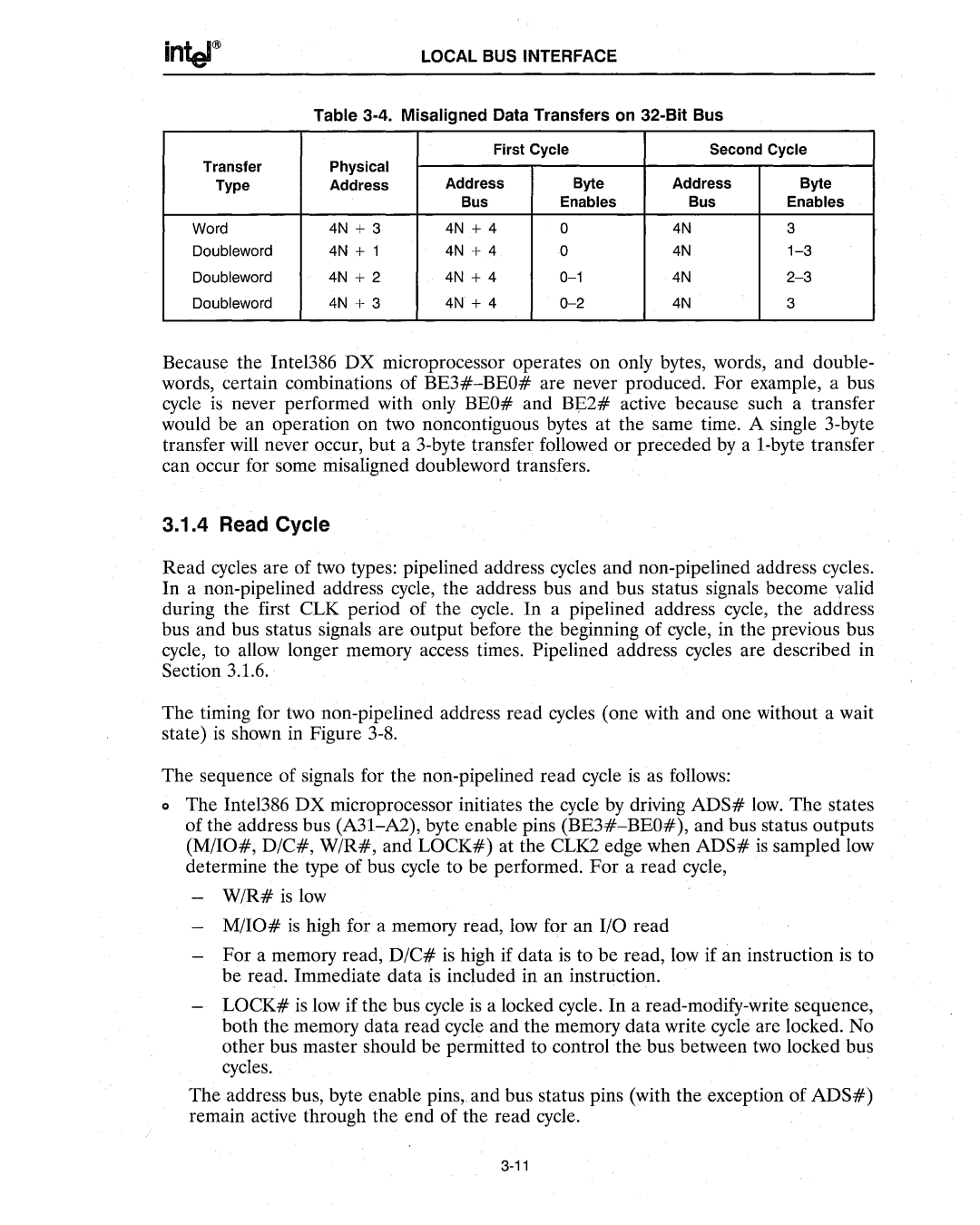LOCAL BUS INTERFACE
Table 3-4.Misaligned Data Transfers on 32-Bit Bus
| Transfer | Physical | | First Cycle | Second Cycle |
| Address | Byte | Address | Byte |
| Type | Address |
| | | | Bus | Enables | Bus | Enables |
| Word | 4N | + 3 | 4N + 4 | 0 | 4N | 3 |
| Doubleword | 4N | + 1 | 4N | + 4 | 0 | 4N | 1-3 |
| Doubleword | 4N | + 2 | 4N | + 4 | 0-1 | 4N | 2-3 |
| Doubleword | 4N | + 3 | 4N | + 4 | 0-2 | 4N | 3 |
Because the Intel386 DX microprocessor operates on only bytes, words, and double- words, certain combinations of BE3#-BEO# are never produced. For example, a bus cycle is never performed with· only BEO# and BE2# active because such a transfer would be an operation on two noncontiguous bytes at the same time. A single 3-byte transfer will never occur, but a 3-byte transfer followed or preceded by a I-byte transfer can occur for some misaligned doubleword transfers.
3.1.4 Read Cycle
Read cycles are of two types: pipelined address cycles and non-pipelined address cycles. In a non-pipelined address cycle, the address bus and bus status signals become valid during the first CLK period of the cycle. In a pipelined address cycle, the address bus and bus status signals are output before the beginning of cycle, in the previous bus cycle, to allow longer memory access times. Pipelined address cycles are described in Section 3.1.6.
The timing for two non-pipelined address read cycles (one with and one without a wait state) is shown in Figure 3-8.
The sequence of signals for the non-pipelined read cycle is as follows:
oThe Intel386 DX microprocessor initiates the cycle by driving ADS# low. The states of the address bus (A3I-A2), byte enable pins (BE3#-BEO#), and bus status outputs (M/IO#, D/C#, W/R#, and LOCK#) at the CLK2 edge when ADS# is sampled low determine the type of bus cycle to be performed. For a read cycle,
W/R# is low
M/IO# is high for a memory read, low for an I/O read
For a memory read, D/C# is high if data is to be read, low if an instruction is to be read. Immediate data is included in an instruction.
LOCK# is low if the bus cycle is a locked cycle. In a read-modify-write sequence, both the memory data read cycle and the memory data write cycle are locked. No other bus master should be permitted to control the bus between two locked bus cycles.
The address bus, byte enable pins, and bus status pins (with the exception of ADS#) remain active through the end of the read cycle.
3-11

